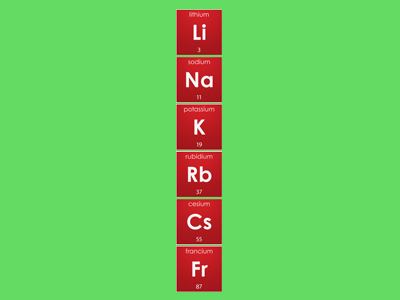
Periodic Table - Group 1 Elements
A knowledge of the periodic table is a vital part of GCSE Chemistry. In this quiz we look at the group 1 elements - the alkali metals.
After many years of work by many different scientists, the periodic table was devised. The scientist given most credit was a Russian, Dimitri Mendeleev (pronounced Men-dell-ay-ef). He made the leap of faith that there were still many elements to be discovered and left gaps where he thought they should be. The metals account for most of the elements and appear on the left hand side of the table. The elements are arranged in vertical groups that contain elements that have similar chemical and physical properties.
The first group of elements of the periodic table is is made up from the most reactive metals. They have a variety of uses, for example lithium is used to manufacture laptop, tablet and mobile phone batteries, sodium is used in street lighting, potassium in fertilisers and caesium for making extremely accurate 'atomic' clocks used by scientists.
Ready for more?
not all...
quizzers. Try to win a coveted spot on our Hall of Fame Page.







